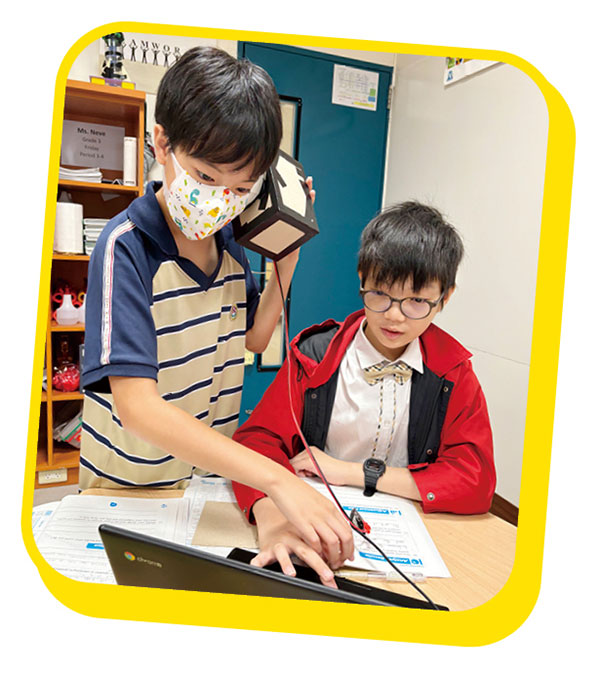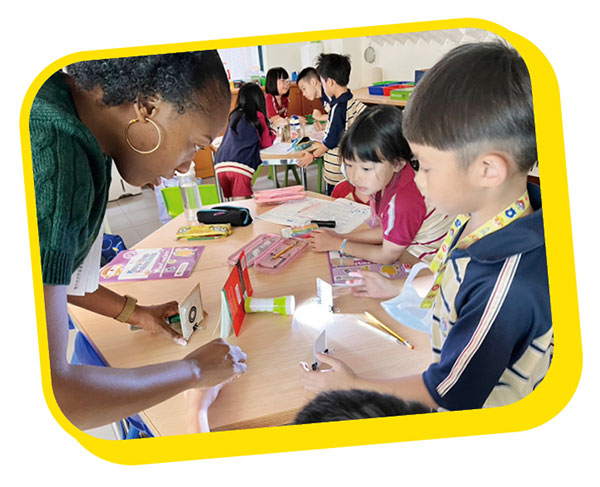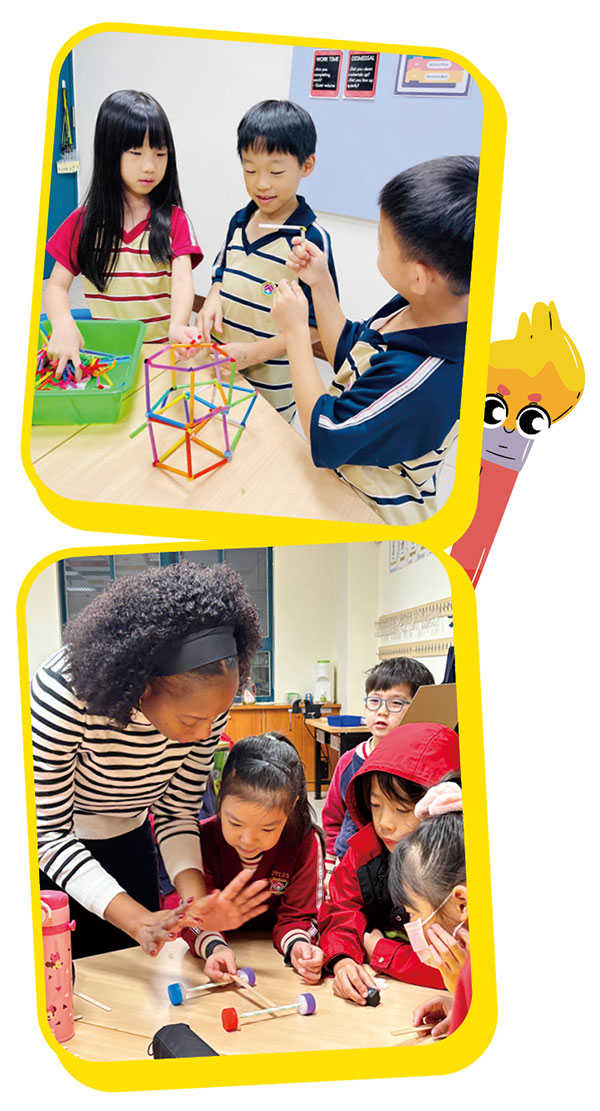

~ Precious Kubeka
KCFS Teacher
Welcome to the latest edition of the Kang Chiao Future Skills (KCFS) Spotlight! At Kang Chiao, our Grade 1 and 2 students are immersing themselves in the world of Science, Technology, Engineering, and Mathematics (STEM) through hands-on learning experiences designed to spark curiosity and creativity. This innovative program fosters essential skills like problem-solving and critical thinking - qualities that will serve our young learners throughout their academic journey.
What is KCFS?
KCFS is a forward-thinking program designed to nurture students' abilities in STEM through a project-based, interdisciplinary approach. It encourages young learners to explore, create, and tackle challenges in practical contexts. Through KCFS, students work on a variety of exciting, practical projects that bridge science, technology, engineering, and math. By fostering a solution-oriented environment, KCFS prepares students for the future and empowers them to become the inventors of tomorrow.


In KCFS, evaluations go beyond grades to reflect students’ learning processes. Our six-stage approach - Ask, Imagine, Plan, Create, Improve, and Present - guides students through projects and tracks their progress. For Grades 1-2, we assess workbooks, understanding of concepts, and teamwork, highlighting the importance of the learning process, not just the end result. This method encourages self-reflection, helping students identify areas for growth.
Grade 1 and 2 STEM Curriculum: Real-World Problem Solvers
In Grade 1, students explore the concept of biomimicry, learning how nature inspires human inventions. They discover examples like how the wings of birds influenced airplane designs and how the structure of beehives has shaped architectural ideas, helping students connect nature with technology. They study how ants, bees, mud daubers, and paper wasps organize their nests and apply this knowledge to create supply organizers that mimic the patterns of these insect nests. Additionally, they explore shapes by identifying and classifying 2D and 3D shapes, as well as investigating symmetry, vertices, and faces. Using this understanding of shapes, students design jungle gyms using straws and pipe cleaners. These hands-on activities establish a foundation for higher grade geometry lessons and help students view the world through a mathematical perspective.
In Grade 2, students explore simple machines such as pulleys, levers, and wheels. By constructing these machines, they learn how they simplify tasks and overcome daily difficulties. The equipment trolley project encourages students to design and build functional trolleys, fostering joint effort and the application of engineering concepts. They also investigate the properties of light through experiments on reflection, refraction, and color, sparking curiosity and providing a foundation in basic physical science. Students then use these principles to design a light maze, where they track the path of light from its source (a flashlight) to the target.

Empowering Future Innovators
KCFS is more than a STEM program; it’s a transformative learning experience. Through thoughtful evaluations, hands-on projects, and a focus on collaboration, we are nurturing the next generation of creative thinkers, critical problem solvers, and innovators. By preparing students with the tools to approach hurdles creatively, KCFS is empowering them to shape the future.
From the Editor
Connecting Learning to Real Life
國際處主任 賴國宜
In Kang Chiao Future Skills (KCFS), our second graders recently took on an exciting challenge: designing a cart using wheels and axles to help PE teachers move heavy sports equipment. As part of the project, students learned how wheels and axles reduce friction. Then they chose materials, sketched their designs, and worked in teams to build and test their cart models. This hands-on activity is a great example of how KCFS brings learning to life. Students didn't just study scientific and engineering concepts - they experienced how knowledge can solve real-world problems and make life easier.
In this edition, Ms. Kubeka, our lower-grade KCFS head teacher, shares how the teaching team uses STEAM principles to design engaging lessons. We would like to encourage you to talk to your child about their KCFS projects and explore ways to apply these ideas to everyday life. These conversations can inspire curiosity, creativity, and a love of learning!
PE老師經常要搬運沉重的體育器材,為了解決這個問題,Kang Chiao Future Skills (KCFS) 的二年級小工程師們接受挑戰一個特別任務:運用輪軸的知識,設計一輛手推車來幫助PE老師更輕鬆的準備器材。課堂中,孩子們首先研究並實驗如何透過輪軸以減少摩擦力並提高運輸效率,接著選擇合適的材料、繪製設計圖,並分組合作製作手推車的模型,最後,測試它能否真的運載貨物。這是一堂孩子們很喜歡的KCFS課程實例,充分展現我們的核心理念:透過有趣的挑戰任務,讓孩子將所學的知識應用到真實生活中。活動過程中孩子們不僅學習了重要的科學和工程概念,還體會到知識如何改善我們的生活。
本期特別介紹KCFS課程,我們邀請了低年級KCFS課程的領域召集人Ms.Kubeka,分享教師團隊如何依循STEAM的教育精神設計課程。至於高年級的KCFS課程,挑戰性更高,孩子們需要運用更深入的科學、數學和工程知識。Mr.Otter以「建造橋樑」的專題為例,詳細說明教師團隊如何運用實際問題激發孩子的創意思維與問題解決能力。我們鼓勵家長和孩子多聊聊KCFS課程,除了可以了解他們的學習過程,還能一起探討生活中其他應用這些原理的實例。相信這樣的互動能更進一步激發孩子們的學習興趣和創造力!